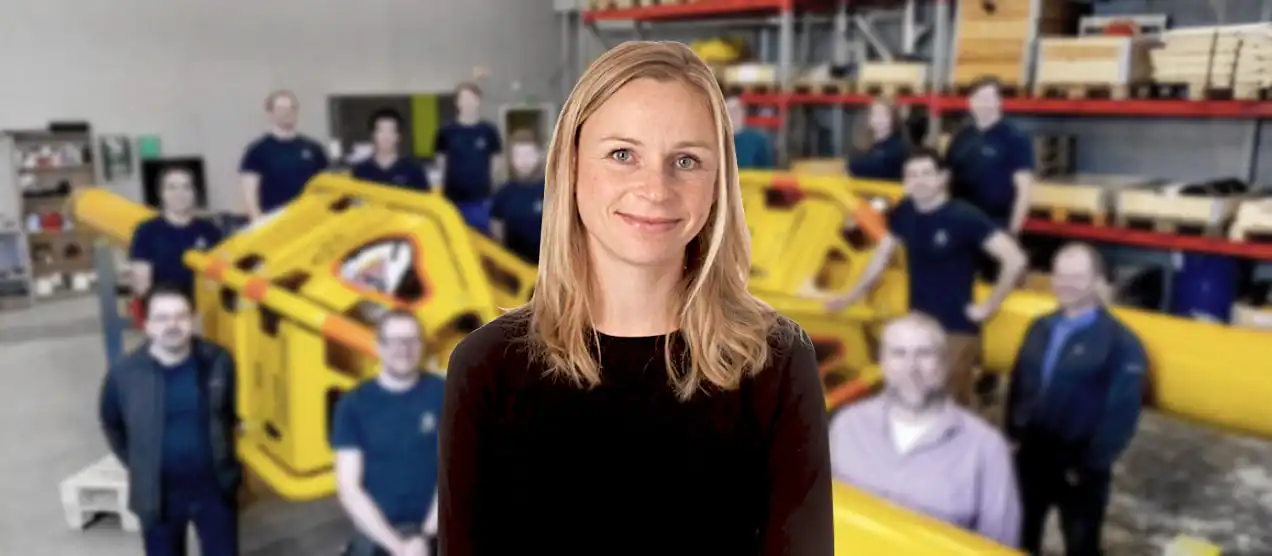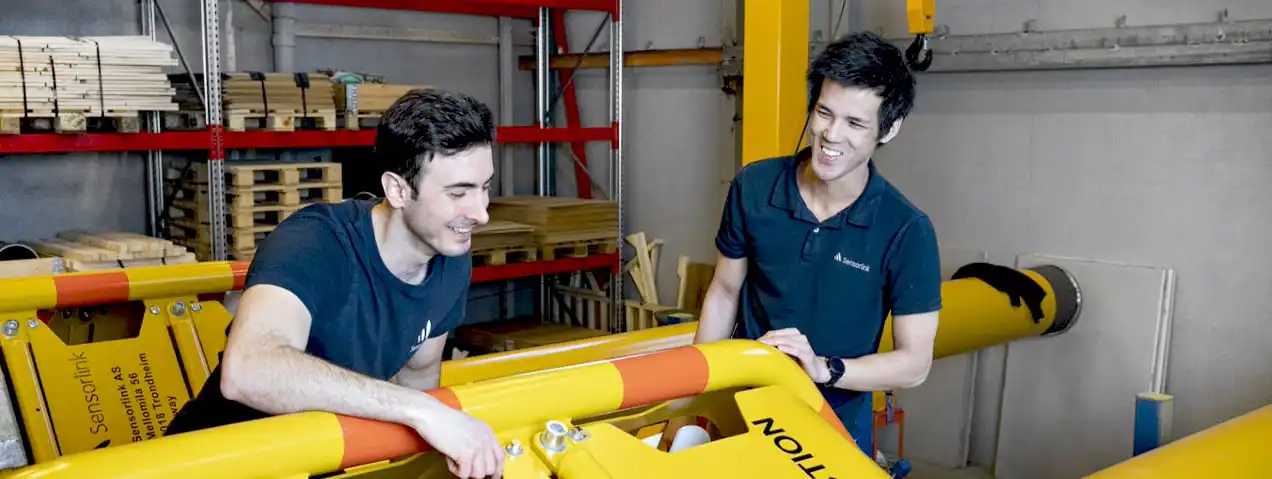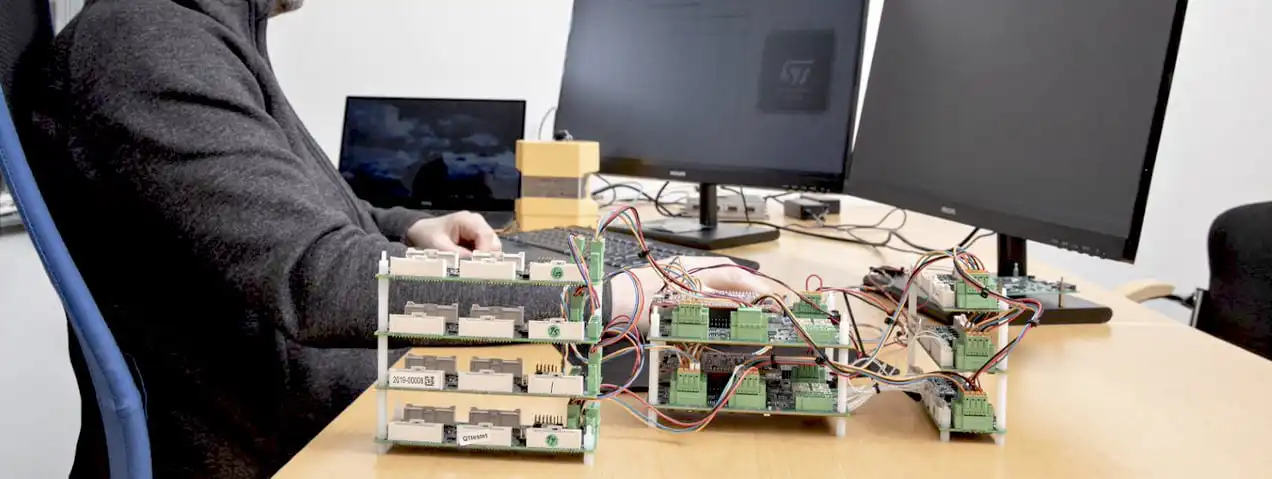


Transforming client data into better decision making – through unique innovation strategy
Hanne Martinussen talks about how Sensorlink strive to ensure that you make well-informed decisions about the integrity of your pipes and pipelines, thanks to a broad and complex team, where every employee possess cutting-edge expertise.
Hanne has a master’s degree in biophysics and a PhD in optics. After several years of working with optical sensors, she started working with ultrasound technology. The theorems of how light and sound propagate like waves are relatively similar. This made the transition into Sensorlink easy for Hanne – who quickly found her place in the team.
— When I first joined the company, I was impressed by the sheer amount of expertise gathered at one place – distributed across a plethora of different disciplines. Today, it feels like there’s no problem in the entire world we cannot solve with electronics and sensors from Sensorlink, she says.
Hanne explains that the feeling of being able to overcome any challenge comes from the way the company and her colleagues work.
— Even though we have excellent technology ready to be delivered on short notice, available as something akin to an off-the-shelf product, we approach every new request with a clean slate and ask ourselves how to best resolve each customer’s specific needs. Every good idea is heard, no matter who presents it – thus, we always push ourselves to craft solutions that are a little bit better than the previous one.
Market leading precision
Sensorlink has long since claimed the position as the market leader on accurate measurements.
— I worked with medical ultrasound before I started working at Sensorlink. Measuring the wall thickness of pipes is relatively easy when compared to ultrasound measurements in the human body. Although, in medical ultrasound we are talking about millimeter precision, while our pipe measurements are almost at the nanometer level. These kinds of measurements require a completely different type of resolution.
However, Hanne points out that these precise measurements are useless if not turned into constructive decision-making support.
— We are constantly discovering new ways of presenting data. Our customers are usually more interested in how they can utilize our high precision data for better decision making than the core technology itself. Although we measure the thickness of the pipes, we apply clever algorithms to the dataset. The algorithms allow us to present the measurements as the rate of corrosion or erosion, which can be an important parameter for the end user.
To present changes over time, you need precise measurements over time and excellent access to the data.
— That is why our data usually goes straight into the control system. With frequent measurements you will be notified quickly if you have a rapid corrosion rate – enabling you to make the right decision at the right time.

The measurement is crucial
A lot of specialized expertise is needed to make accurate measurements and ensuring optimal utilization of the data.
— Everything begins with the ultrasound. We need to make absolutely sure that the measurement is as good as possible.
For the ultrasound measurements to be good, the mechanical design must be sound. Also, the data collection must be well-designed; both ultrasound acquisition boards and datalogger electronics must work flawlessly. Finally, the development, engineering, assembly and testing have to be impeccable – when working in accordance with one another and separately.
— Without a significant degree of professional expertise in every part of our organization, our customers do not end up with the data based decision-making support that enables them to see the full picture, making their asset management work easier. The measurements must be precise, the processing of data efficient and meaningful – and the equipment must withstand years of stress in exposed environments.

More than just a data provider
Hanne emphasizes that the Sensorlink team’s depth of expertise, which spans a wide variety of disciplines, allow them to contribute additional value to their deliveries.
— In addition to making data as easily accessible to the customer as possible, we can do in-depth analyzes of the datasets and look for patterns that further help improve their decision-making. We have extensive experience in interpreting erosion- and corrosion data from many different applications, says Hanne. — Thus, we can provide our customers with quality analyzes.
Sensorlink’s sensors use ultrasound to measure wall thickness changes in pipelines. However, the system is also equipped with temperature sensors – and that data often provides Sensorlink’s customers with a surprising amount of additional valuable data.
— Our customers are often surprised by how the temperature profile is displayed. This data is useful when measuring the effects of corrosion – but it is also very valuable for other disciplines, whose delivery depends on knowing as much as possible about oil- and gas pipelines.
You can read more about Sensorlink’s Topside and Subsea systems and about the Sensorlink technology by following these links.